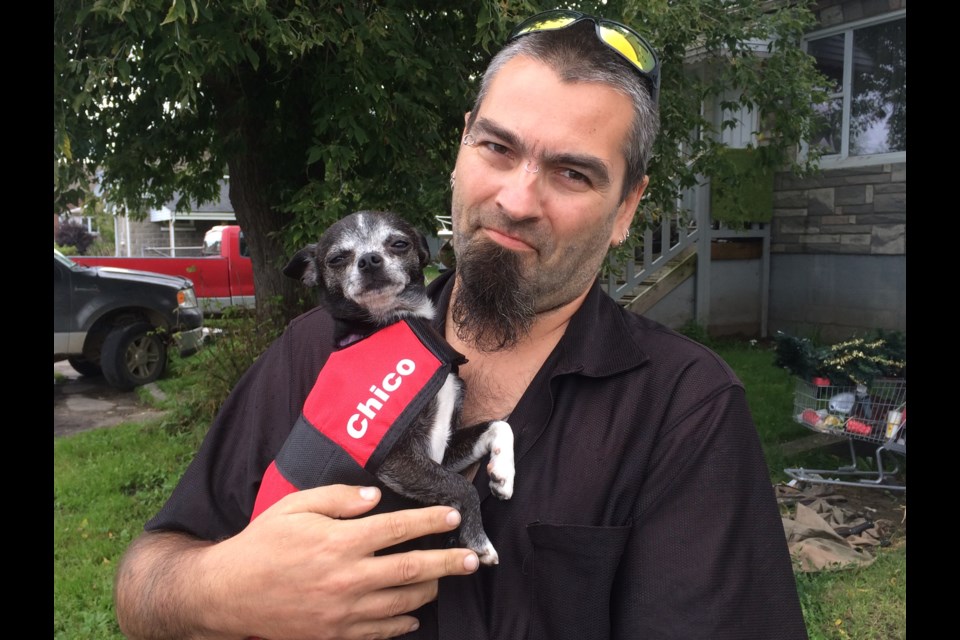Service animals provide support for a multitude of disabilities, the most common being visual, hearing and mobility. But beyond the physical, service animals are used to assist people living with mental health issues which include, Post Traumatic Stress Disorder (PTSD), depression and anxiety.
North Bay's Leo Hansen needs his service dog, Chico, to keep him grounded in social situations.
"People aren't educated enough on the purpose of service animals. You can't always see a person's disability. I deal with PTSD and anxiety issues when I'm outside the house. Chico helps me deal with that stress of going out," says Hansen.
"I'm no longer taking any anti-anxiety medications to deal with going out of the house anymore because of Chico. I've had Chico for just over a year now. We help each other out."
One of the challenges Hansen faces is, because his dog is a Chihuahua, people sometimes have a hard time recognizing the breed as a service animal.
"It boils down to education and respect. Know the regulations around service dogs. Not all service dogs have to go through a training process. It depends on what the service animal is being used for, but they do need to meet certain requirements, especially in public. They can't be running or jumping or barking at everyone they see."
Service dogs typically wear some type of vest or harness as a means of identification. At any time, the owner could be required to provide a letter from a certified medical professional, explaining why the animal is required.
While waiting for Chico to get his service dog vest, Hansen had problems convincing some business owners that his doctor's letter was legitimate.
He also had to deal with a situation this summer when a city transit bus driver did not believe Chico was a service dog, despite having his medical note.
Hansen says the driver initially wasn't going to let the pair on the bus. He subsequently met with a transit official to ensure it wouldn't happen again, and so far, it hasn't come up again.
"We advise the operators through memos, with a photo attached with the owner and animal. It lets them know if this person gets on a bus with this dog or service animal, that the dog is indeed a service animal and that there are not questions as to what that animal is doing." explained City Transit Manager Remi Renaud.
"In many cases when the person tells us that this is my service animal, they (drivers) do permit the person on. However, we do have practices in place when it comes specifically to dogs because we also have to be aware of the safety of other passengers that this dog is an actual service animal and not just a pet. The drivers have all received training when it comes to customer service and accessibility, everything that falls under the AODA (Accessibility for Ontarians with Disabilities Act). If there is any question whether that dog or animal is a service animal, that person may be required to provide a letter or something that proves it is a service animal, from a doctor or nurse practitioner."
Hansen says depending on the disability, working service animals aren't limited to just dogs.
He says people with service animals are already going through trying times, without adding to their problems. He says they need to be treated with respect, which comes from education and awareness.
"Chico gives me the confidence to go out and experience things, even if it is a trip to the store," says Hansen. "I have a new vest for him. That should help when I go different places."
